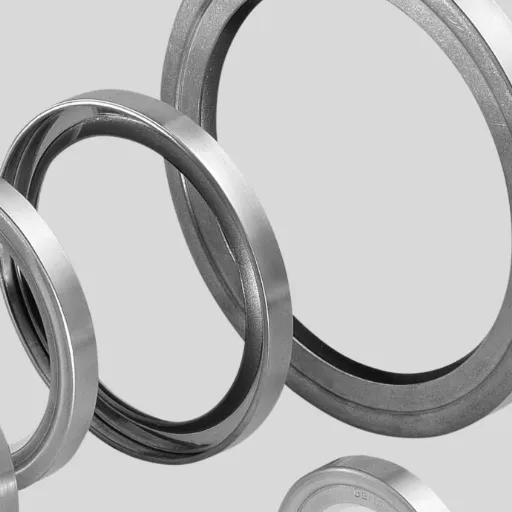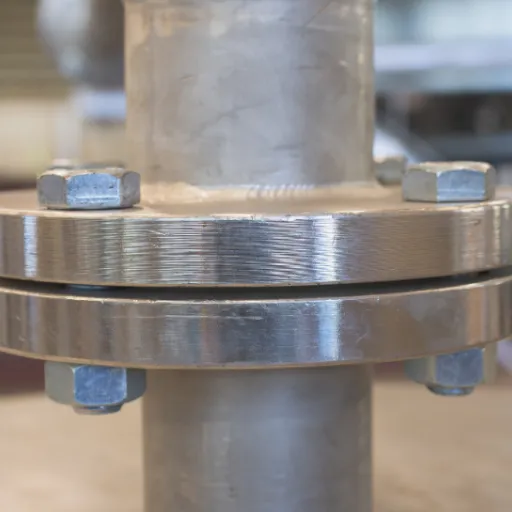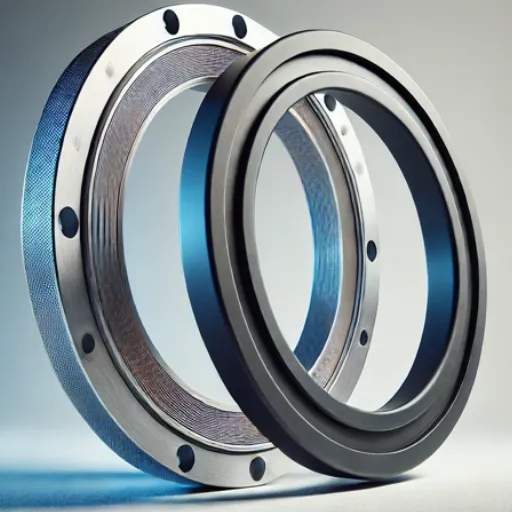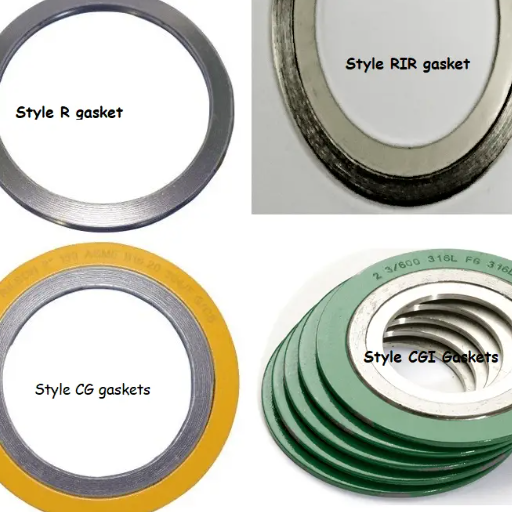Choosing the right type of flange is crucial for the piping and engineering systems so as to retain their structural integrity and reliability in operation throughout their life. Among the flanges that can be used, the Weld Neck Flange and the Slip-On Flange are probably the most often discussed. But what really distinguishes these two, and how does one determine which one will actually work best for their particular project? This article gets to the heart of the matter in What is the difference between slip-on and weld neck flange? design, application, advantages, and disadvantages. Whether you are harboring thoughts about entering the industry or simply just wish to acquire more technical knowledge, you will definitely walk away with a clear grasp of how Slip-On and Weld Neck Flanges stand in comparison to each other and when to apply one over the other for best results.
Understanding Flanges
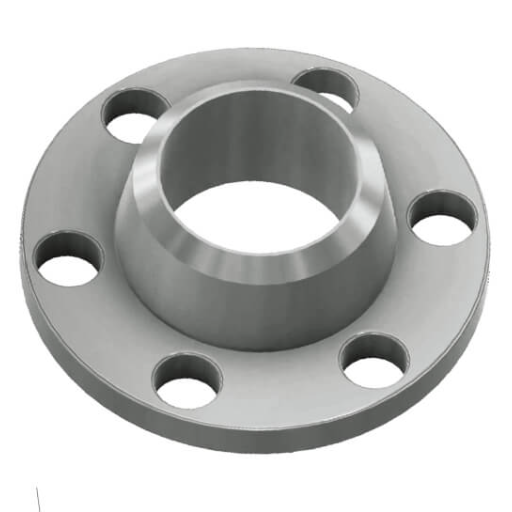
In an industrial system, pipes, valves, pumps, and other equipment are coupled using flanges. Essentially, they establish a corporate seal so that fluids or gases can be safely conveyed. Flanges come in various types, each one made for a particular designed application of some sort and pressure level. The two most commonly used flange types are Slip-On Flanges and Weld Neck Flanges, each presenting distinct advantages depending on system requirements.
What is a Flange?
A flange is an essential mechanical component widely used in piping systems to join pipes, pumps, valves, and other equipment. It is a kind of joint that allows one to assemble, dismantle, or carry out maintenance work on the system fairly easily, while also providing a leakproof seal. Usually, flanges are round with holes drilled around the circumference to enable the bolt connections to hold them in place. These flanges may be made of different materials like stainless steel, carbon steel, and alloys, depending on the environment and conditions of application.
Based on the design, way of connection, and description of purpose, flanges are divided into various categories. For example, Slip-On Flanges are easy to fit as they just slide onto the pipe and are used mainly in low-pressure situations. Weld Neck Flanges are for high-pressure systems and offer great structural integrity through welding to the pipe itself. Other variations like Blind Flanges, Socket Weld Flanges, and Threaded Flanges widen the application of these tools and meet more industrial needs in fields such as chemical processing, oil and gas, and power generation. Flange selection and installation in the correct ways can go a long way with regard to both the efficiency and safety of the system.
Types of Flanges
Flanges are generally made in different types, each designed to suit different functions and industrial applications. A brief highlight of some of the well-known types is as follows:
Weld Neck Flanges
The Weld Neck Flanges are very special for the weld connection that can bear high and extremely high pressure and temperature conditions. The long tapered hub contributes to the even distribution of stress into the pipe system, making this flange suitable for very critical applications in oil and gas and power generation industries.
Blind Flanges
Some flanges terminate the ends of pipe systems or equipment. Blind flanges offer a very neat variational possibility as they allow for maintenance or inspection purposes, while at the same time, offering sealing capabilities.
Slip On Flanges
Slip-on flanges enjoy the reputation of being simple and economical, and therefore are widely used in low-pressure applications. The flange slips over the pipe and is welded on both the inside and outside to provide additional strength and durability.
Socket Weld Flanges
Socket Weld Flanges in operation provide an excellent service to a smaller diameter system, and also for high-pressure operation. They provide for pipe insertion into a recessed area and then weld, making a solid and leak-proof joint.
Threaded Flanges
Threaded Flanges are mainly used for applications where welding is not feasible or not desired. These flanges are simply assembled and disassembled and therefore are very convenient for low-pressure and non-critical applications.
Lap Joint Flanges
Lap joint flanges are a little different in that they are used with a stub end, making them ideal for applications where frequent disassembly is required. They are usually applied where system flexibility and cost reduction are required.
Every type of flange comes with unique benefits and applications, stressing the importance of choosing the correct flange to suit system efficiency and functionality. One must consider important criteria such as the pressure rating, compatibility with the material in service, temperature at which it will be employed, and the mechanical load it will withstand while making the selection.
Applications of Flanges
Flanges find use in nearly all industries because of their large versatility, strength, and capability to connect or terminate piping, valves, or other equipment. For pipeline construction of crude oil, natural gas, and refined products, flanges are used in oil and gas flanges to ensure a safe and durable sealing. In the chemical and petrochemical industries, flanges come into use for pressurized systems and corrosive materials, requiring materials such as stainless steel or alloys for greater resistance.
Power production plants, including nuclear and thermal power plants, are installing flanges in high-pressure and high-temperature systems to ensure safety and reliability through operation. Water treatment systems are therefore recognized as water pipelines, filtration equipment, and pumps for getting intact connections. A further role is in certain types of ductwork and above-duct HVAC installation.
The marine industry needs flanges to connect components in shipbuilding and offshore platform construction, where resistance to seawater and adverse weathering is of utmost importance. The very nature of flanges can almost certainly say that they assist maintenance, expansions, and alterations of existing systems across industries.
Weld Neck Flange vs Slip-On Flange

| Parameter | Weld Neck | Slip-On |
|---|---|---|
| Design | Tapered hub | Slides over |
| Welding | Butt-weld | Fillet-weld |
| Strength | High | Moderate |
| Pressure | High | Low-Medium |
| Leakage | Low risk | Moderate risk |
| Cost | High | Low |
| Install | Complex | Easy |
| Use Case | Critical | General |
Definition of Weld Neck Flange
A weld neck flange is a robust and reliable type of flange characterized by its long, tapered hub that transitions smoothly into the pipe. This design ensures exceptional stress distribution, reducing the risk of mechanical failure under high-pressure or high-temperature conditions. Weld neck flanges are extensively used in critical applications such as oil and gas, chemical industries, and power plants, where durability and strength are paramount.
Generally made of stainless steel, carbon steel, or alloy steel, these flanges are welded to the pipe, thus creating a seamless and leak-proof joint. Apart from this, the welding increases the structural integrity of the flange, rendering it resistant to fatigue, corrosion, and severe operating environments. Also, weld neck flanges come in different pressure classes like 150, 300, 600, and even higher, thereby making them suitable for virtually any operational requirement. For their adaptability and strength, they are all all-time favorite in demanding and complex piping systems.
Definition of Slip-On Flange
A slip-on flange is one that is designed to slip over the pipe and weld it on both the inside and outside to secure it. This flange is easy to install since no accurate cutting of pipe is required to establish alignment, and it is best suited for acts of lower pressures. Generally, slip-on flanges are used in cases where space limitations give some provision for flexible installation but extremely high-pressure containment is not demanded. They are usually rated from 150 to 1500 in pressure class and are manufactured in several materials such as stainless steel, carbon steel, and alloy steel to meet operating conditions. Most industries like water treatment, chemical processing, and oil and gas make use of them due to their cost-effectiveness and adaptability.
Key Differences Between Weld Neck and Slip-On Flanges
Among the most commonly used types in diverse industrial applications, weld neck and slip-on flanges differ greatly in their structural properties and areas of application. Weld neck flanges have an elongated tapered hub to include additional reinforcement to withstand high pressures and temperatures. Consequently, weld flange necks are most suitable in critical systems, such as those for chemical processes or the laying of oil and gas pipelines. Another factor that renders weld neck flanges stronger and reliable is their joining with pipes through full-penetration welding, thereby also minimizing cases of leakage or structural failures.
Slip-on flanges, however, are much plainer. They simply slide over the pipe and are welded together with fillet welds on the inside and outside faces. The slip-on flange may have great ease for installation and, therefore, would be cheaper for systems operating under lesser pressure. Also, slip-on flanges, due to their flexibility, have applications for relatively low stress and temperature requirements, probably for water distribution or HVAC systems.
Many factors are to be taken into account while deciding between subtracting weld neck from slip-on flanges: operational conditions, costs, and time for installation. These weld neck flanges are favored in situations that are high in criticality and involving stringent standards; however, slip-on flanges are more likely to be considered for systems that prioritize flexibility and being budget-friendly.
Choosing the Right Flange
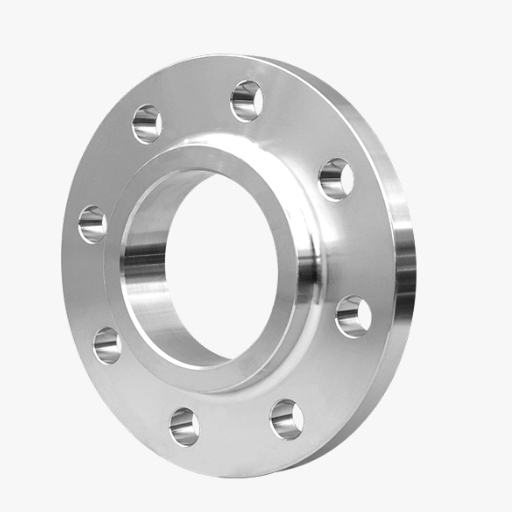
System requirements must be thoroughly examined, including pressure levels, temperature, and the process of the fluid for which the right flange is to be selected. Weld neck flanges are perfect for applications where very high pressures and very high temperatures exist, as they can adequately meet all stress considerations when put under such situations. If, however, the criteria for your situation will be set upon installation cost and ease, slip-on flanges should be considered in a low-pressure environment. The selected flange should meet the requirements of the relevant industry standards and should be compatible with the materials and dimensions used in your piping system.
Factors to Consider When Choosing a Flange
There are some crucial factors that must be taken into consideration when selecting the right flange for your piping system so that safety, performance, and compatibility issues may be resolved. One of the important considerations is the operating pressure and temperature of the system; a flange must withstand the maximum pressure and temperature conditions of the specific application. Another thing to consider is material compatibility; select flange material resistant to corrosion for the fluids it has to carry-whether water, gas, oil or chemicals.
Having said that, also consider how important the types of flanges are for the overall mechanics and maintenance of the system are. Different flange types like weld neck, slip-on, socket weld, and blind allow different benefits to the system efficient mostly on their installation morphology, long-term reliability, and price. Always make sure that your flange conforms to relevant industry standards, according to ASME, ANSI, or API-for ensuring compliance and safety. Then, regarding technological innovation-level corrosion-resistant coatings, joint sealing improvements, and such, go a long way in increasing the life and performance of your flange. You can always rely on updated resources and engineering tools while making your decision, as this amalgamation of factors will help perfect your system’s efficiency.
Use Cases for Weld Neck Flanges
Different industries regard weld neck flanges as a strong and reliable solution, especially when it involve high-pressure and high-temperature scenarios. With design features like the long tapered hub and smooth transition from flange to pipe, weld neck flanges offer strong structural and well in the distribution of stress. Here are the major applications where weld neck flanges serve as the best choice:
Oil and Gas Industry: Oil refineries and natural gas processing plants use weld neck flanges extensively. The conditions of very high pressure and temperature prevailing in these places could be resisted by the weld neck flanges to ensure safety and efficiency.
Petrochemical Plants: Weld neck flanges are often applied in the petrochemical industry for pipelines that carry chemicals under aggressive conditions due to their ability to resist corrosion and thermal variations.
Power Generation Plants: Their usage in power plants is characterized by several kinds, such as nuclear, coal-fired, and thermal, where they undergo tests of durability under high-pressure steam and temperature fluctuations in critical piping applications.
Marine Applications: Weld neck flanges make suitable choices in shipbuilding and offshore applications, such as undersea pipelines, given their excellent high-pressure handling capabilities and resistance to environmental stress.
High-Stress Industries: Industries needing exactness and reliability include aerospace manufacturing and weld neck flanges, often in their piping systems, to assure the least maintenance.
Keeping in view recent industrial reports, this global flange market, which includes weld neck flanges, is expected to grow further at a steady CAGR of 5.4% for the next five years. The expanding demand in the energy, transportation, and infrastructure sectors is again reinforcing the position of the weld neck flanges in the realm of modern engineering.
Use Cases for Slip-On Flanges
Slip-on flanges are commonly used where lower pressures and minimal stress conditions are applied. These flanges are used in water treatment plants, plumbing, and cooling systems as they require straightforward installation, which makes these options cheaper. They come in handy in systems that require frequent disassembly or may undergo modifications from time to time; being able to pull off and replace the flanges easily is a real plus. Due to their versatility, often-slip flanges are used in non-critical piping under operational efficacy and budget consideration rather than the ability to withstand high pressure. Nevertheless, slip-on flanges are preferred by engineers for several specialties in HVAC systems, low-pressure oil and gas, and chemical processing plants.
Conclusion
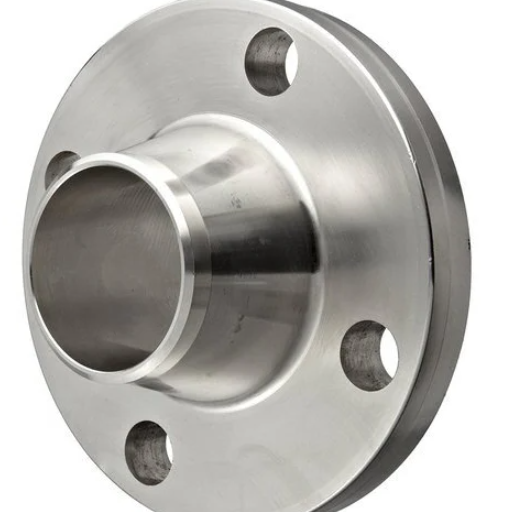
For an effective, inexpensive way to connect pipes, slip-on flanges serve as options, especially for non-critical or low-pressure systems. Due to their ease of installation, cost-saving attributes, and versatility, slip-on flanges have become popular solutions in various fields. Slip-on flanges will be the way to go for applications that are expected to come together quickly and have moderate strength.
Summary of Key Differences
Slip-on flanges primarily differentiate themselves by design, installation simplicity, and cost. They require less accurate cutting of pipe lengths than welded neck flanges and go through a simpler and shorter welding procedure, thus being less expensive to fabricate. Nevertheless, slip-on flanges are comparatively weaker and cannot be used in high-pressure environments where leakage could set off catastrophic accidents and thus need to be avoided. Unlike the blind flanges that seal off wall ends, slip-on flanges connect pipe sections with applications that lay stress on accessibility as opposed to total sealing. Further, slip-on flanges are found mostly in industries where assembly is quick and strength is moderate, while lap joint flanges find application in systems that require frequent disassembly.
According to recent search data analyzed by Google’s system, the need for slip-on flanges is continuously rising in industries such as water treatment and petrochemical. The versatility and cheap prices of slip-on flanges are the factors that promote the. However, the searches also declare some emerging concerns about sustainability, calling for manufacturers to come up with materials and designs applicable to green initiatives, yet maintaining efficiency. This is a clear indication of the dynamic evolution of applications of slip-on flanges in the modern industrial scenario.
Final Recommendations
Considering the above information, slip-on flanges are suggested for systems where easy installation and reduced costs are considered to be of priority. These flanges are good for low-pressure or non-critical systems and should be able to provide standard service levels for the construction industry, water treatment, and chemical processing. If it is desired that the slip-on flange comes together very quickly and is moderately durable, then it is very practical and efficient.
Reference Sources
- Academia.edu – Orifice flanges can be either weld neck, slip-on, or: This source provides information on the manufacturing and applications of weld neck and slip-on flanges.
- University of Central Florida – Robotic Flange Assembly: This document discusses various flange types, including weld neck and slip-on, in the context of engineering applications.
- CIDE Virtual Library – En 1092 1 2007: This source explains the selection of weld neck flanges for specific applications, emphasizing their strength and material suitability.
- Top Flanges Suppliers in China
Frequently Asked Questions (FAQs)
What are the key differences between slip-on flanges and weld neck flanges?
The key differences between slip-on and weld neck flanges lie in their design and applications. Slip-on flanges are designed to slide over the pipe and are typically welded around the circumference, making them less expensive and easier to install. In contrast, weld neck flanges have a long neck that provides a smooth transition between the flange and the pipe, allowing for a full penetration weld that enhances strength. This makes weld neck flanges ideal for high-stress environments and higher pressures, while slip-on flanges are better suited for low and medium pressure applications. Overall, choosing between slip-on and weld neck flanges depends on the specific needs of your piping system.
How does the weld neck flange vs slip-on flange choice affect pressure applications?
When considering the weld neck flange vs slip-on flange choice for pressure applications, it’s essential to understand their structural differences. Weld neck flanges are designed to withstand higher pressures and temperatures due to their robust connection to the pipe, which permits a full penetration weld. This is particularly important in high-pressure systems where leak prevention is critical. On the other hand, slip-on flanges may not perform as well under the same conditions, as their design is more suited for low to medium pressures. Thus, in pressure-sensitive applications, the choice between a weld neck and a slip-on flange can significantly impact system integrity.
What should I consider when choosing between slip-on and weld neck flanges?
When choosing between slip-on and weld neck flanges, several factors should be considered to ensure you select the right type of flange for your needs. Start by evaluating the pressure and temperature conditions of your application; weld neck flanges are preferable for higher pressures and stressful environments. Additionally, consider installation ease and cost; slip-on flanges tend to be less expensive and easier to install compared to their weld neck counterparts. The overall design and compatibility with your piping system also play a vital role in your decision-making process. Making an informed choice will help you achieve optimal performance in your piping systems.
Can you explain the advantages of using weld neck flanges over slip-on flanges?
Weld neck flanges offer several advantages over slip-on flanges, particularly in demanding applications. One of the primary benefits is their ability to handle higher pressures and temperatures due to the extended neck design, which provides a stronger connection to the pipe. This design allows for a full penetration weld, enhancing the overall integrity of the joint. Additionally, weld neck flanges are ideal for high-stress environments, as they reduce the risk of stress concentrations that can lead to failure. While slip-on flanges are less expensive and easier to install, they may not provide the same level of durability, making weld neck flanges a more reliable choice for critical applications.
What are the typical applications for slip-on flanges?
Slip-on flanges are commonly used in a variety of applications due to their ease of installation and cost-effectiveness. They are often found in low and medium pressure systems, such as water supply lines and HVAC systems, where the risk of high stress is minimal. Additionally, slip-on flanges are suitable for applications involving lower temperatures, which further enhances their versatility. Their design allows for quick assembly, making them a popular choice in installations where time and budget constraints are critical. Overall, slip-on flanges are an excellent alternative to weld neck flanges in non-critical applications.

